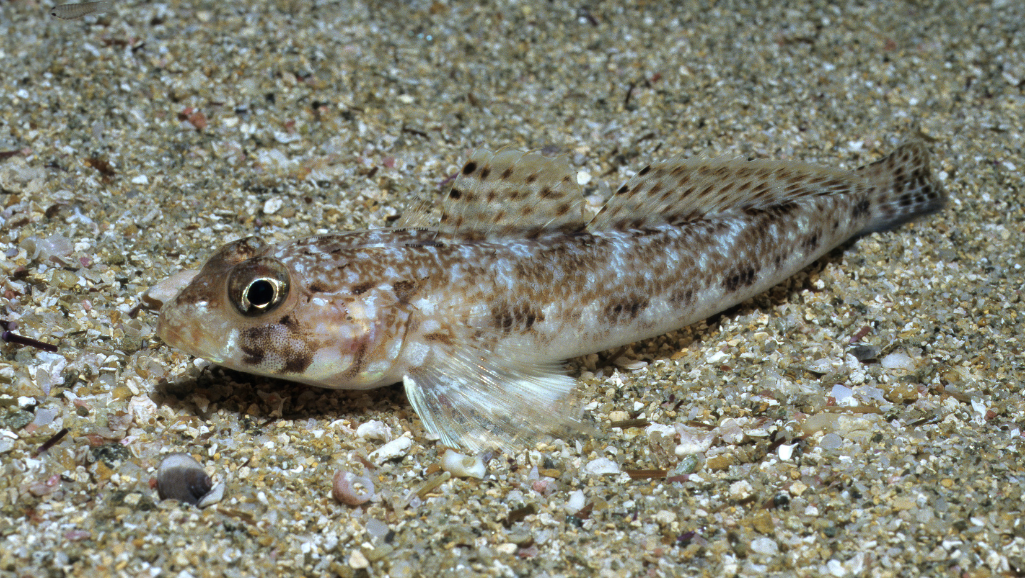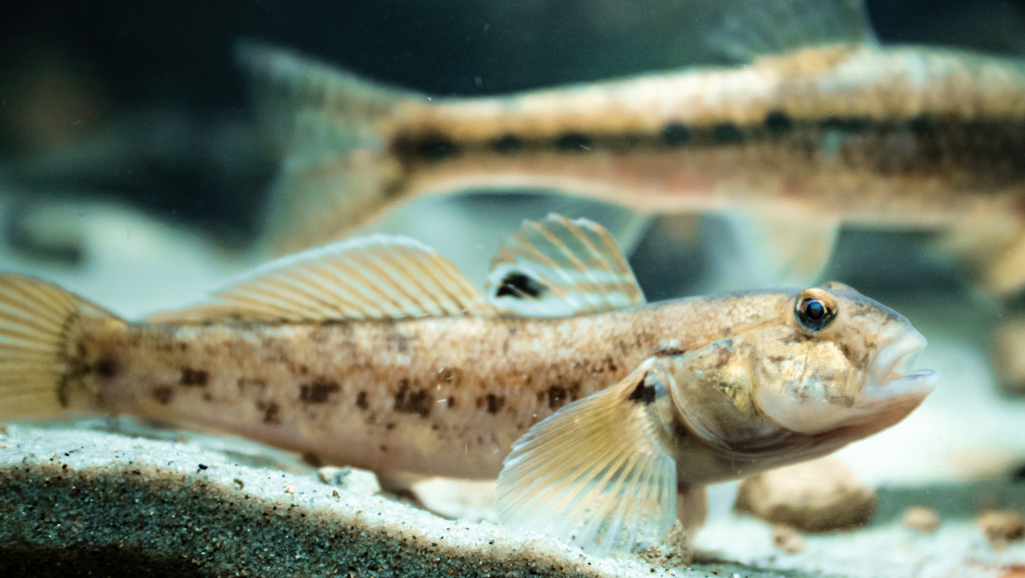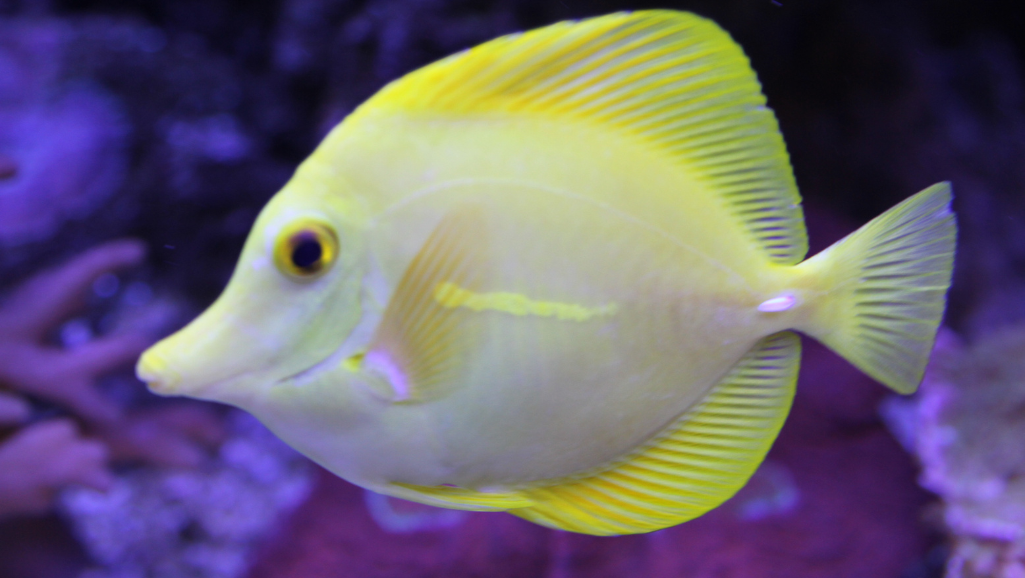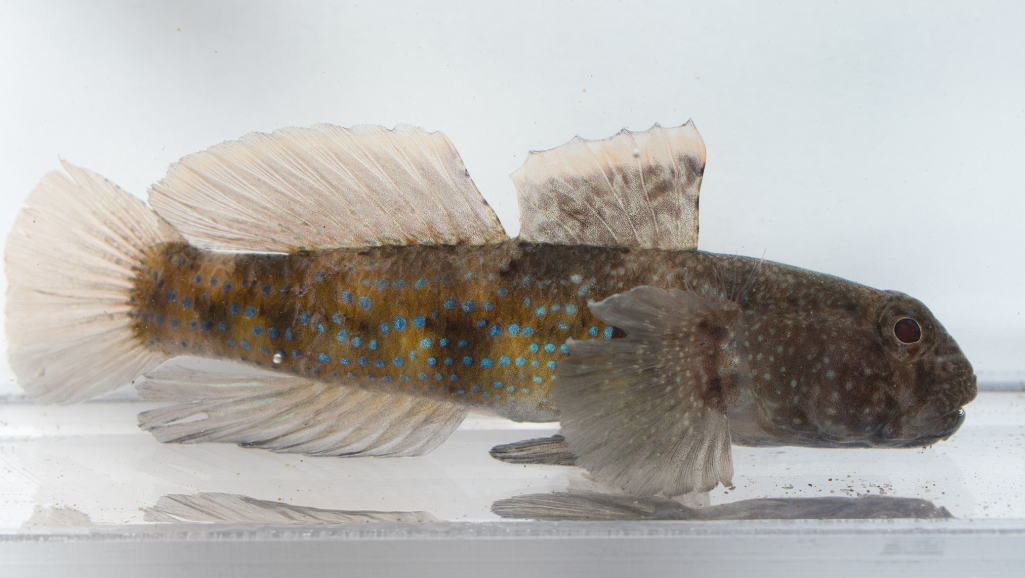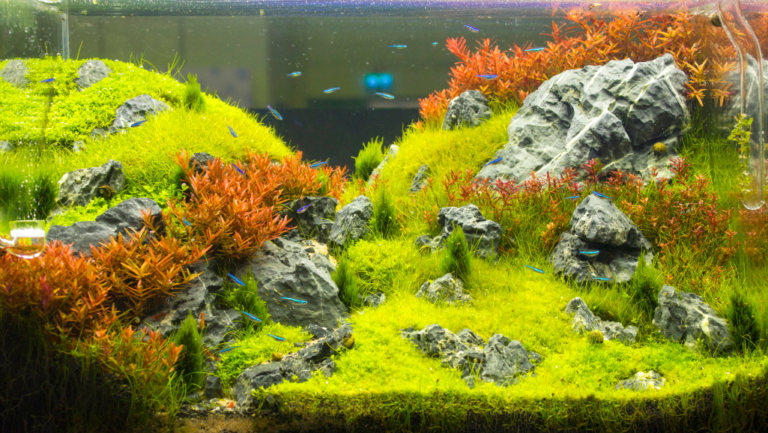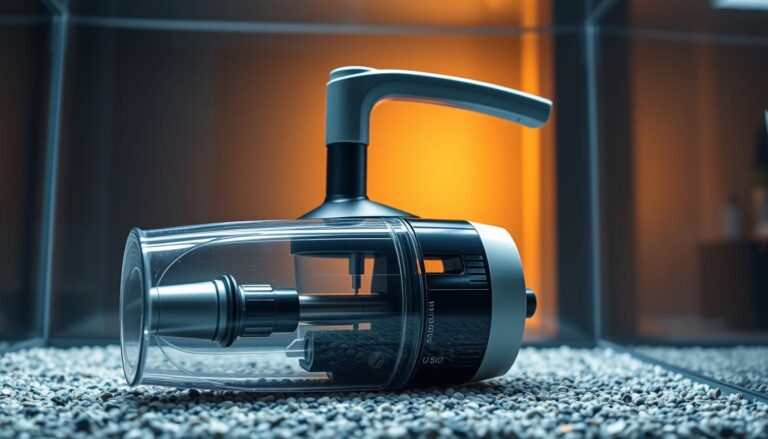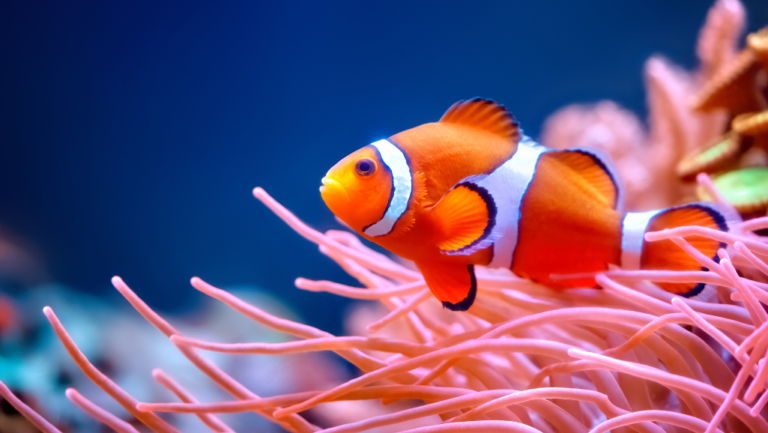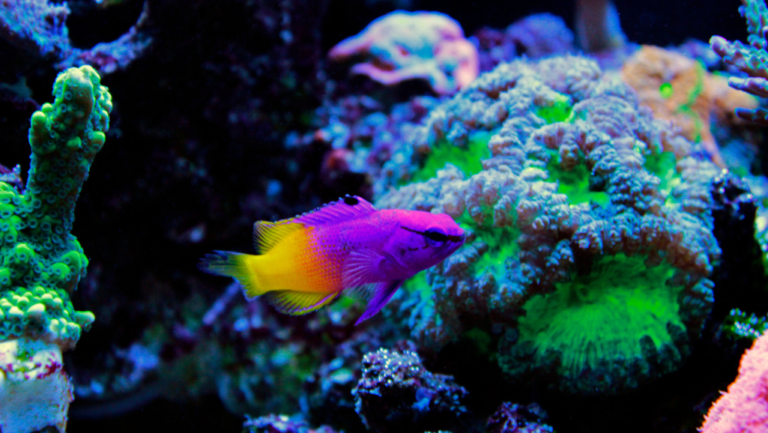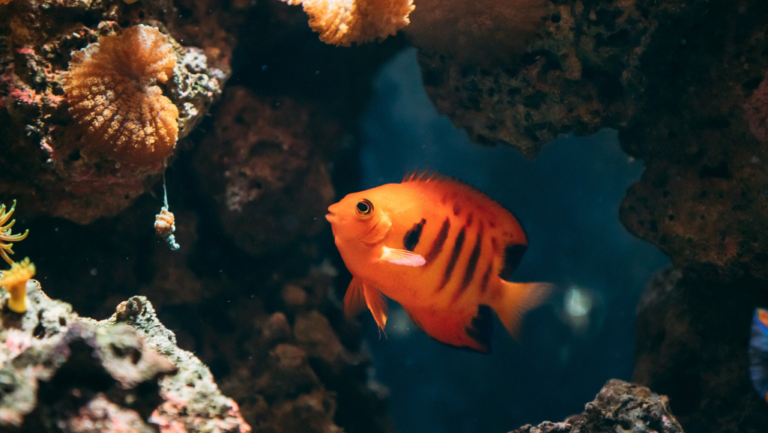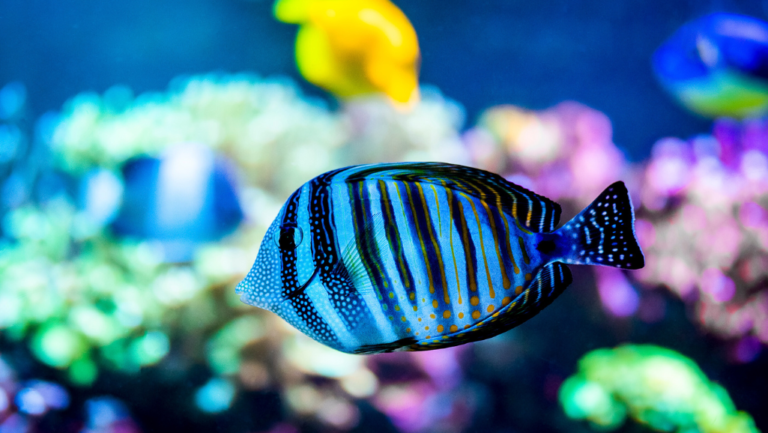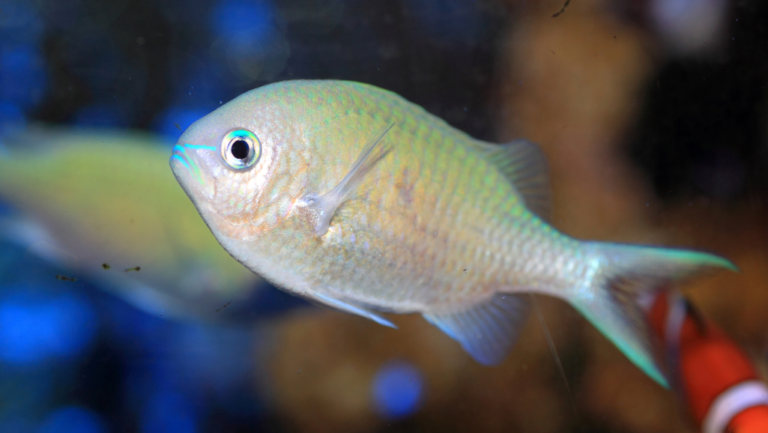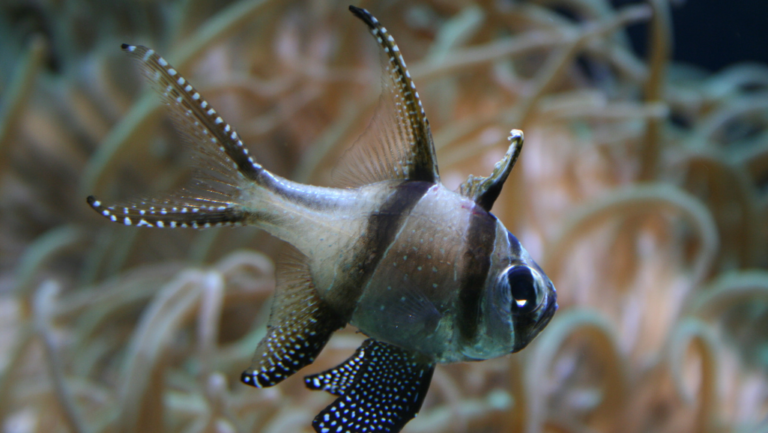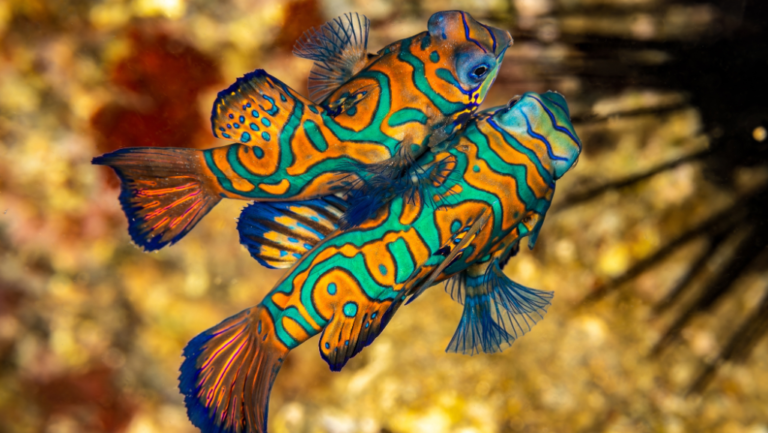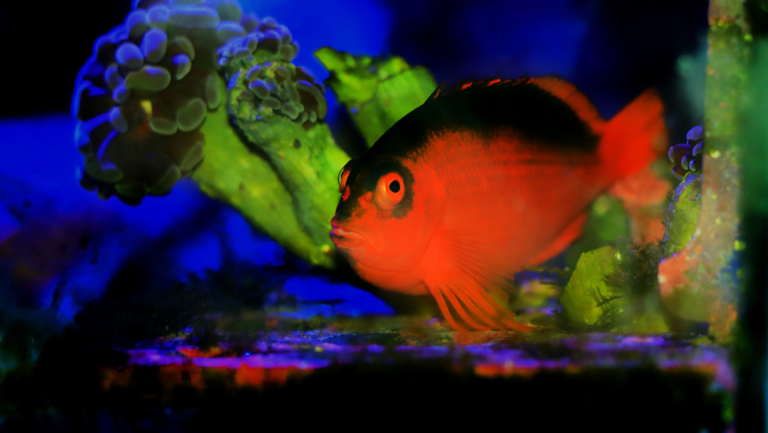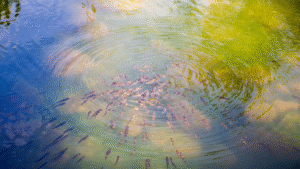Welcome to the world of the Neon Goby, a standout in saltwater aquarium life. These colorful fish are not just pretty; they help keep the tank healthy. They play a key role in controlling parasites among other marine fish.
Key Takeaways
- The Neon Goby is a vibrant addition to any fish tank with a high captive breeding rate, making them accessible for aquarists.
- Thriving in tanks that are at least 30 gallons, these 2-inch colorful fish have a typical lifespan of around 18 months.
- Ensuring a water temperature of 72.0 to 78.0° F and a pH range of 8.1-8.4 is key for their health.
- Identified as peaceful yet territorial, they are carnivorous, needing a diet rich in protein.
- Neon Gobies are known to clean other fish in the tank, a unique behavior.
- They get along with fish like Ocellaris Clownfish and Blue Tang, but may be aggressive when breeding.
- Ideal for beginners, Neon Gobies are easy to breed in captivity.
Overview of the Neon Goby Species
The Neon Goby, known scientifically as Elacatinus oceanops or Stiphodon atropurpureus, is a stunning addition to marine aquariums worldwide. It’s famous for its bright blue stripe and peaceful nature. This makes it a great choice for community tanks.
These small fish grow up to 2 inches long. They thrive in the small spaces of reef tanks. Their size and calm demeanor let them live well with other sea creatures.
Physical Characteristics
Males have a more vibrant blue stripe than females. This difference helps them organize in their natural habitat. They can live up to two years, enriching the tank’s life for a long time.
Behavior and Temperament
The Neon Goby is known for being very calm. They like to be in pairs or small groups. They also help keep other fish healthy by eating parasites.
Habitat and Natural Environment
Neon Gobies come from the warm waters of the Caribbean. They love living among coral reefs. They can live in tanks that mimic their natural home, from 1 to 40 meters deep.
Having them in a tank makes it look better and keeps the ecosystem balanced. They are a favorite among both hobbyists and scientists.
Essential Tank Setup for Neon Gobies
Creating the perfect aquarium setup for Neon Gobies means copying their natural saltwater homes. It’s key to keep the water quality right and the tank decor attractive. A well-designed saltwater aquarium setup meets their needs and looks great in your home.
Recommended Tank Size
A 10-gallon tank is the smallest needed for Neon Gobies to swim freely. But, a 30-gallon tank is better for a more detailed setup or a small group. A longer tank helps them swim and meet their territorial needs, just like their natural home.
Substrate and Decor Considerations
Choosing the right substrate and decorations is critical. A sandy bottom looks like their home and helps keep the water clean. Live rocks and caves are great for hiding spots, making them feel safe and comfortable.
Water Quality and Parameters
Water conditions greatly affect Neon Gobies’ health. The water should be between 72°F and 78°F, and the specific gravity between 1.023 and 1.026 SG. pH levels should stay between 8.1 and 8.4. Good filtration and regular care are essential for their well-being.
Following these tips, anyone can make a great home for Neon Gobies. This ensures their health and lets you enjoy their beauty in your aquarium setup.
Feeding and Nutrition Requirements
Proper nutrition is key for Neon Gobies to stay healthy and colorful. Knowing their carnivore diet needs is vital for their well-being. It’s a big part of aquarium fish care.
Ideal Diet for Neon Gobies
Neon Gobies need a diet rich in protein to stay energetic and healthy. They do well on commercial fish feeds made for marine life. Foods like Mysis Shrimp and sinking pellets are great for them.
Adding meaty foods like brine shrimp helps them eat like they do in the wild. But, don’t overfeed them. Too much food can harm their health.
It’s good to give them fresh or blanched veggies sometimes. This helps balance their diet and makes their meals more varied.
Feeding Schedule and Quantities
Feeding them small meals often helps them digest better. Experts say to feed adult gobies small amounts three times a day. This keeps the tank clean and the fish active.
- Frequent, smaller meals help maintain water quality by reducing excess waste.
- Adjust portions according to the fish’s size, age, and activity level.
- Monitor feeding to ensure all food is consumed within a few minutes to prevent overfeeding.
Following these tips will greatly improve your aquarium fish care. It will make your Neon Gobies healthier and more vibrant. They’ll thrive in an environment that meets their natural dietary needs.
Breeding Neon Gobies Successfully
Starting a fish breeding journey with Neon Gobies requires careful care and a well-set breeding tank. These marine fish are known for their bright colors and lively actions. Breeding them lets you see marine fish reproduction up close.
Breeding Environment Setup
To breed Neon Gobies well, you need to create a habitat like their natural one. Add cave-like spots and overturned shells for them to spawn. A special breeding tank is best for their eggs.
The female goby lays 500 to 600 eggs, but usually about 250. The breeding tank should have the right water temperature and pH. This ensures the eggs and fry stay healthy.
Caring for Fry and Parental Care
After spawning, the male Neon Goby protects the eggs for 6 to 8 days. Watching the eggs grow is interesting. Newborns need zooplankton for food to grow.
The larvae change a lot around 18 to 20 days. Their colors and actions start to look like adult gobies. Keeping the water stable and feeding them well is key during this time.
For more tips on breeding Green Neon Tetras and others, check out this guide. It talks about the special care and environment needed for healthy marine fish breeding.
Following these tips can help you breed Neon Gobies successfully. It’s good for your aquarium’s diversity and your learning in marine fish reproduction. Remember, the secret to success is in the details of care, the right tank setup, and dedication to both fry care and parental involvement.
Common Health Issues and Diseases
Keeping your fish healthy is key, even more so for Neon Gobies. These colorful fish can get sick if we don’t take good care of them. It’s important to watch out for aquarium fish diseases.
Knowing the signs and taking steps to prevent illness is vital. This helps keep your fish happy and healthy.
Symptoms to Watch For
- Loss of color, which might indicate stress or illness
- A reduction in appetite, often a first sign of health issues
- Unusual or erratic behavior such as spiral swimming or lethargy
Preventive Measures and Treatments
Preventing disease is an ongoing task. It helps keep your fish healthy. Here are some ways to ensure your saltwater fish health is top-notch:
- Regular water changes help maintain water quality and reduce stress on fish.
- Quarantine new fish before introducing them to the main tank to prevent the spread of disease.
- Avoid overstocking the aquarium to minimize stress and aggression among fish.
If a fish gets sick, the treatment depends on the disease. You might need to change the water and use special medicines. Watching your fish closely and acting fast can save their lives and those of their tank mates.
Tank Mates Compatibility
Choosing the right community tank friends for Neon Gobies is key. These fish are known for their bright colors and calm nature. They do well with compatible species that are also peaceful. Let’s explore the best and worst tank mates for Neon Gobies, focusing on their ability to live with other reef tank inhabitants and peaceful marine fish.
Best Tank Mates for Neon Gobies
When setting up a community tank, pick species that match the calm life of Neon Gobies. Good friends include:
- Small Tetras – known for their gentle nature and similar size.
- Rasboras – another group of peaceful fish that meshes well in a shared space.
- Dwarf Shrimp – these invertebrates are not only compatible but also add a dynamic visual element to the tank.
- Other small, peaceful marine fish that respect the territory and feeding zones of Neon Gobies.
It’s good to introduce these species into a tank that reflects the natural habitat of the gobies. This ensures all fish find comfort. For more on creating such environments, check out this comprehensive guide.
Fish to Avoid with Neon Gobies
On the other hand, some species should be avoided to keep Neon Gobies healthy and happy:
- Large Predatory Fish – These can intimidate or harm smaller gobies.
- Aggressive Territorial Fish – Species that compete vigorously for food and space can stress gobies.
- Large, Competitive Bottom-Feeders – These could outcompete gobies for essential resources.
Choosing the right tank mates requires looking at each species’ demeanor and needs. Keeping incompatible species together can cause stress, illness, and disharmony in your tank.
Understanding compatibility is vital for a thriving reef tank. Careful thought about each inhabitant’s needs, behaviors, and compatibilities leads to a vibrant and healthy aquarium. Ensuring the well-being of these delicate creatures involves continuous learning and attention to detail in choosing their companions.
Frequently Asked Questions (FAQs) About Neon Gobies
Exploring saltwater aquariums, many wonder about fish care. The Neon Goby, with its bright colors, raises questions about its lifespan and living in freshwater. We aim to clear up these doubts to help keep these fish healthy.
Lifespan of Neon Gobies
The Neon Goby is a favorite in reef tanks for its bright colors. People often ask about their lifespan. These fish usually live for 1-2 years with the right care.
Their long life depends on a healthy tank. It’s worth noting that Neon Gobies are not as common as other fish. This is because they need special care.
Can Neon Gobies Live in Freshwater?
Many think Neon Gobies can live in freshwater. But, they actually need saltwater to thrive. It’s important to create a saltwater home that matches their natural habitat.
If you’re interested in keeping a variety of fish, remember to keep their needs separate. For example, check out care for common freshwater fish to learn more.
In summary, Neon Gobies are amazing but need the right saltwater home to thrive. Caring for them shows dedication and knowledge.
